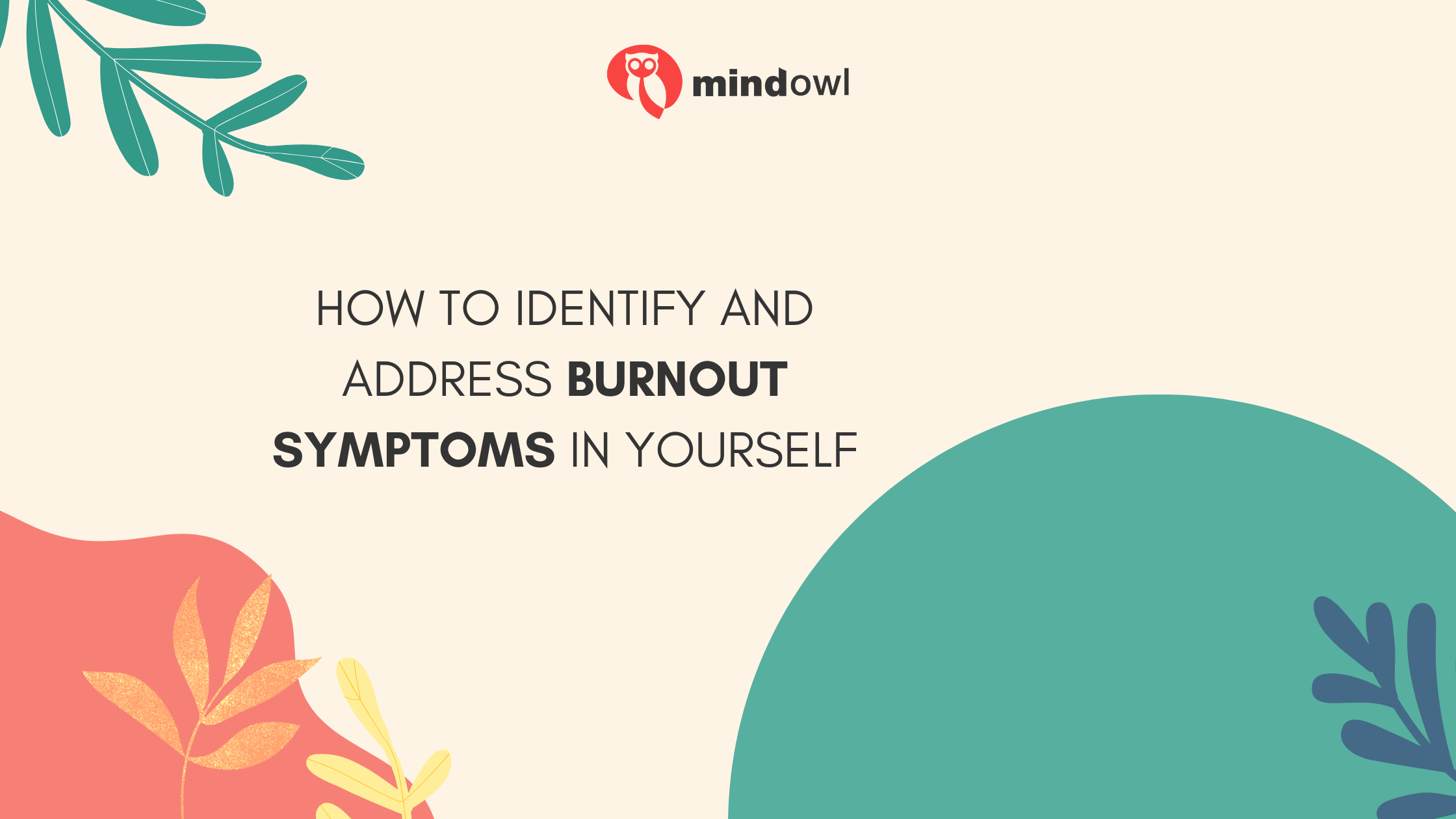
Feeling completely drained after another long day at work?
You’re not alone. Burnout has become a massive problem that’s affecting millions of people worldwide. Recent data shows that 76% of employees are affected by workplace burnout at least sometimes.
Here’s the problem:
Most people don’t even realize they’re experiencing burnout until it’s too late. They mistake it for regular stress or just being “tired.” But burnout is something completely different — and much more serious.
The truth is that burnout symptoms can sneak up on you gradually. One day you’re handling everything just fine, and the next you’re struggling to get out of bed or complete basic tasks.
What you’ll discover:
- Warning Signs That You’re Burning Out
- The Physical and Emotional Toll of Burnout
- Proven Strategies to Address Burnout Symptoms
- How to Build Long-Term Resilience
Warning Signs That You’re Burning Out
Want to know the scary truth about burnout?
Most people experiencing it don’t even realize what’s happening. They think they’re just “going through a rough patch” or dealing with normal work stress.
But here’s the thing…
Burnout is your body’s way of screaming that something needs to change. When you’re dealing with burnout symptoms and management becomes crucial, resources like The Anxiety Clinic can provide valuable guidance on recognizing and addressing these warning signs before they escalate.
Let me explain the most common warning signs that indicate you might be burning out:
Emotional Exhaustion
This is usually the first sign. You feel completely drained — not just physically tired, but emotionally empty. Even simple conversations with friends or family feel like they require massive amounts of energy you just don’t have.
You might notice that you’re:
- Feeling overwhelmed by daily tasks
- Having trouble concentrating on anything
- Getting irritated by small things that never bothered you before
- Losing interest in activities you used to enjoy
Physical Symptoms
Your body keeps the score when it comes to chronic stress. 79% of employees reported chronic workplace stress as a major issue affecting their well-being.
The physical symptoms of burnout include:
- Chronic fatigue that doesn’t improve with rest
- Frequent headaches or muscle tension
- Sleep problems — either can’t fall asleep or wake up constantly
- Digestive issues like stomach aches or changes in appetite
- Getting sick more often because your immune system is compromised
Loss of Motivation and Purpose
Remember when you used to care about your work? When you had goals and felt excited about achieving them?
Burnout strips all that away. You start going through the motions without any real purpose or drive. Everything feels pointless.
This shows up as:
- Procrastinating on important tasks
- Feeling cynical about work or life in general
- Questioning whether anything you’re doing matters
- Avoiding responsibilities whenever possible
The Physical and Emotional Toll of Burnout
Here’s something that might surprise you:
Burnout doesn’t just affect your work performance. It impacts every single area of your life.
Recent studies show that 52% of survey respondents reported experiencing burnout in 2021, up from 43% before COVID-19. That’s a massive increase that shows just how widespread this problem has become.
What Burnout Does to Your Body
When you’re in a constant state of stress, your body produces high levels of cortisol. Over time, this hormone wreaks havoc on your physical health.
The long-term effects include:
- Weakened immune system making you more susceptible to illness
- Cardiovascular problems from chronic stress on your heart
- Digestive issues that can become chronic conditions
- Muscle tension and pain that doesn’t go away with rest
The Emotional Impact
Burnout doesn’t just make you tired — it changes who you are as a person. You might find yourself becoming:
- More irritable and short-tempered with loved ones
- Disconnected from friends and family
- Cynical about life and work
- Unable to enjoy things that used to bring you happiness
This emotional toll can be devastating. Many people report feeling like they’ve lost themselves completely.
Proven Strategies to Address Burnout Symptoms
The good news? You can recover from burnout with the right approach.
But here’s what most people get wrong:
They think a weekend off or a short vacation will fix everything. Unfortunately, burnout recovery requires a more comprehensive approach.
Set Boundaries That Actually Work
One of the biggest causes of burnout is having no boundaries between work and personal life. This is especially true for remote workers who find it impossible to “switch off.”
Start with these boundary-setting strategies:
- Create a hard stop time for work each day and stick to it
- Turn off work notifications after hours
- Designate work-free zones in your home
- Learn to say no to non-essential requests
Prioritize Recovery Activities
Your body needs time to heal from chronic stress. This means actively scheduling recovery time — not just hoping it will happen naturally.
Effective recovery activities include:
- Regular exercise even if it’s just a 20-minute walk
- Meditation or mindfulness practice to calm your nervous system
- Quality sleep with a consistent bedtime routine
- Social connection with people who energize you rather than drain you
Address the Root Causes
Here’s the hard truth: If you don’t address what’s causing your burnout, it will keep coming back.
Common root causes include:
- Excessive workload that’s unsustainable long term
- Lack of control over your work or schedule
- Poor work environment or toxic relationships
- Misalignment between your values and your work
You need to be honest about what’s really driving your burnout and take steps to change those underlying issues.
Building Long-Term Resilience
Want to prevent burnout from happening again?
Building resilience isn’t about becoming tougher or pushing through more stress. It’s about creating sustainable systems that support your well-being.
Develop Stress Management Skills
The reality is that stress will always be part of life. The key is learning how to manage it effectively before it becomes overwhelming.
Practical stress management techniques:
- Time blocking to manage your schedule more effectively
- Breathing exercises to activate your body’s relaxation response
- Regular check-ins with yourself to monitor stress levels
- Problem-solving skills to address issues before they escalate
Create Support Systems
Isolation makes burnout worse. 59% of millennials experience burnout, followed by 58% of Gen Z, showing that younger workers are particularly affected.
Building a strong support system includes:
- Finding a mentor who can provide guidance and perspective
- Connecting with colleagues who understand your challenges
- Maintaining friendships outside of work
- Seeking professional help when needed
Regular Self-Assessment
Prevention is always better than cure. Regular self-assessment helps you catch burnout symptoms early before they become severe.
Ask yourself these questions weekly:
- How are my energy levels compared to normal?
- Am I sleeping well and eating regularly?
- Do I feel motivated and engaged with my work?
- Am I maintaining healthy relationships?
If you notice negative changes, take action immediately rather than hoping things will improve on their own.
Time to Take Action
Burnout isn’t something you can ignore and hope it goes away. The longer you wait to address it, the harder it becomes to recover.
The truth is: Your health and well-being are more important than any job, project, or deadline. If you’re experiencing burnout symptoms, you need to take them seriously.
Start with small changes today. Set one boundary. Schedule one recovery activity. Reach out to one person for support.
Remember, recognizing burnout is the first step toward recovery. You don’t have to figure this out alone, and you don’t have to wait until you’re completely burnt out to make changes.
Your future self will thank you for taking action now rather than waiting until burnout completely derails your life and career.
MindOwl Founder – My own struggles in life have led me to this path of understanding the human condition. I graduated with a bachelor’s degree in philosophy before completing a master’s degree in psychology at Regent’s University London. I then completed a postgraduate diploma in philosophical counselling before being trained in ACT (Acceptance and commitment therapy).
I’ve spent the last eight years studying the encounter of meditative practices with modern psychology.

